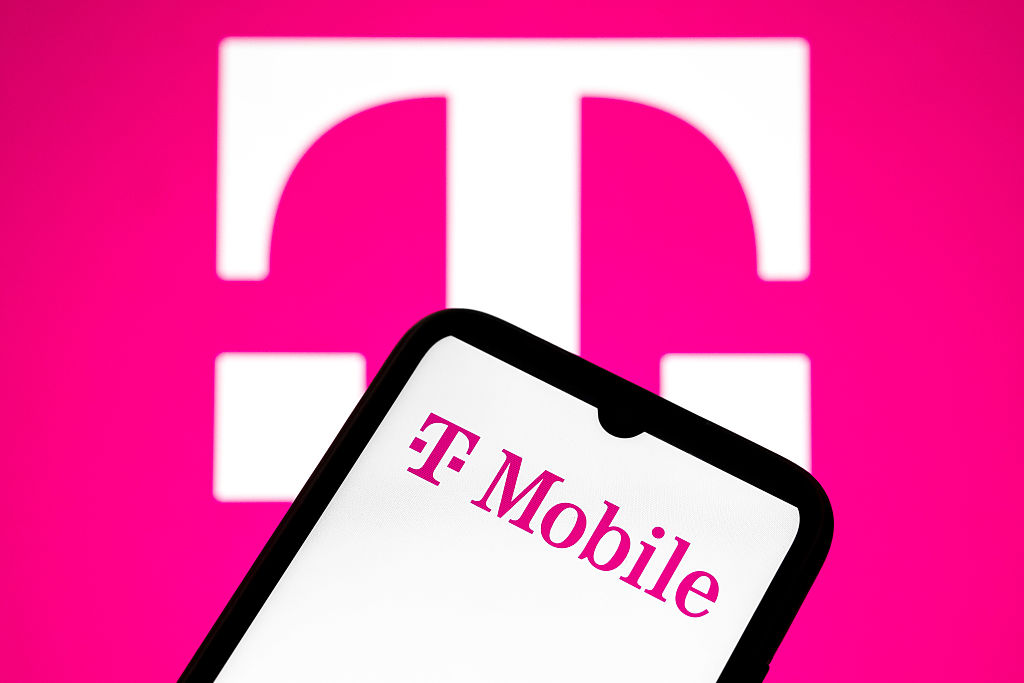4 Charitable Giving Tips for Uncertain Times
With all that has gone on in 2020, it’s good to know that the giving spirit is alive and well this year. Time is running out to make a difference this year, but now’s also a great time to get a longer-term strategy for the future.


We have experienced a year of disruption and uncertainty, and many are wondering if it will end with a bang or a whimper. Let’s hope for the latter, as 2020 has already been enough of a “bang.” One thing that is encouraging, as we’ve endured these challenges, is that the charitably inclined have stepped up. So, the legacy of 2020 will not be a year of malaise but instead one marked by generosity and philanthropic spirit.
In a survey earlier this year, nearly 40% of Americans indicated they’re likely to donate more to charity this year than 2019, with 60% suggesting this is due to the pandemic and 19% citing the political climate. As we take a look at Giving Tuesday’s record-breaking numbers, it appears donors have kept to their word. Donors gave an estimated $2.47 billion in 2020, a 25% increase from last year’s $1.97 billion. There was also a rise in the number of donors who participated in Giving Tuesday, with a total of 34.8 million people compared to 2019’s 25.56 million.
We observed a record number of 2020 donations, with donor-advised funds (DAF) playing an important role. Money is simultaneously flowing out of their accounts as donors continue contributing into those same funds, despite the stock market roller-coaster and the troubled economy. For instance, what we’ve seen within our organization, DonorsTrust, is a 30% increase in grant volume. And that number is climbing as we are now in the final weeks of December, and are processing a flurry of grant requests. This year DonorsTrust accountholders will have requested more money out of their DAF accounts than they contributed into them.
From just $107.88 $24.99 for Kiplinger Personal Finance
Become a smarter, better informed investor. Subscribe from just $107.88 $24.99, plus get up to 4 Special Issues

Sign up for Kiplinger’s Free Newsletters
Profit and prosper with the best of expert advice on investing, taxes, retirement, personal finance and more - straight to your e-mail.
Profit and prosper with the best of expert advice - straight to your e-mail.
While there has been an uptick in giving throughout 2020, the pending revolving door of Washington political institutions can affect future giving patterns. Nothing is certain, but here are four tips to maximize your charitable giving strategy as we move into the unknowns of 2021.
1. Take Advantage of Current Tax Laws
One notable tax advantage to utilize before year’s end is the CARES Act, which created two tax incentives to spur donations. The first is a $300 write-off that donors can claim for giving cash to charity, even if they take the standard deduction when filing taxes. The second incentive raised the limit on charitable deductions as a percentage of one’s adjusted gross income (AGI) from 60% to 100%. If you are in a position to do so, consider increasing your 2020 charitable gifts to wipe-out your federal income tax liability. Two rules apply: First, this only applies to cash gifts and it cannot be used (entirely) to fund a donor-advised fund account. Secondly, you can fund your DAF under the old rules (up to 60% of AGI) and also make qualified gifts to a public charity to reach that 100%.
2. Plan for Year-End Giving
Year-end giving remains popular, as many nonprofits report receiving the majority of their annual giving during this time, specifically in December. This is thought to be because people feel generous around the holiday season and therefore are more inclined to give. Perhaps we are all just a bunch of procrastinators — and there still are a few days left to act before the end of the year. However, next year, instead of waiting until the last minute and racing to give to multiple different charities, plan your giving strategy well ahead of time. One way to effectively plan for the future is to seek out help in the form of a charitable giving vehicle, such as a donor-advised fund.
3. Establish a DAF
From a tax perspective, DAFs are the most attractive charitable giving vehicle. The vehicle allows for an immediate tax deduction, even if distributions from the fund are made in the future. And if you already have a DAF, you can receive a current-year deduction for a gift made into your fund before Dec. 31 even if you wait until the new year to recommend any grants to charities. Most importantly, by utilizing a DAF now, donors can avoid the possible tax law changes set in place by political forces next year.
Additionally, if you’re looking to donate to multiple charities at year’s end or all year long, DAFs make it easy. They provide a simple way to organize donations, providing one statement that lists each organization supported, as opposed to separate statements from each charity.
4. Consider Future Tax Laws
At least until the mid-term elections in 2022, margins in Congress and the Senate will be thin – but, when combined with a friendlier White House, Democrats will have a slight advantage. This means if a tax bill were to be passed and rates increased, charitable deductions may be caught in the middle. For example, high-income donors can currently write off $37,000 of a $100,000 charitable gift, but the proposed plan by President-elect Biden would limit the write-off to just $28,000. Additionally, Biden’s plan to impose a 12.4% Social Security tax on income earned above $400,000 would likely hurt giving, and that tax can’t be reduced through giving. Further, he has already signaled that he would like to revisit (and reduce) the current estate tax caps, currently scheduled to sunset at the end of 2025.
As we enter the final days of the year, those charitably inclined still have a little time to act. And if you can’t get it all done before the clock runs out, take a moment to plan your giving strategy for next year instead. The rules around giving are sure to change, so it’s imperative you take advantage of the charitable tax while you still can. Follow these giving strategies and prepare yourself for the tax changes soon to come and well into the future.
Profit and prosper with the best of Kiplinger's advice on investing, taxes, retirement, personal finance and much more. Delivered daily. Enter your email in the box and click Sign Me Up.

Lawson Bader has served as president and CEO of DonorsTrust since 2015. He has had 20 years' experience leading free-market research and advocacy groups, including the Competitive Enterprise Institute and the Mercatus Center. DonorsTrust is a community foundation safeguarding the intent of accountholders who seek to promote charities that address civic concerns, are mostly privately funded, do not increase the size and scope of government, and promote free enterprise and personal responsibility.
-
 Are T-Mobile's Prepaid Perks a Home Run or a Strikeout?
Are T-Mobile's Prepaid Perks a Home Run or a Strikeout?T-Mobile's prepaid lineup promises MLB.TV, T-Mobile Tuesdays and hotspot data. But do the perks make it worth switching?
-
 Verizon Home Internet Is Offering Free Tech to New Customers
Verizon Home Internet Is Offering Free Tech to New CustomersVerizon’s latest home-internet promotion includes free tech, but the real savings depend on pricing, speed needs and how long you stay.
-
 Retirees in These 7 States Could Pay Less Property Taxes Next Year
Retirees in These 7 States Could Pay Less Property Taxes Next YearState Taxes Retirement property tax bills could be up to 65% cheaper for some older adults in 2026. Do you qualify?
-
 5 Smart Things to Do With Your Year-End Bonus, From a Financial Professional
5 Smart Things to Do With Your Year-End Bonus, From a Financial ProfessionalAfter you indulge your urge to splurge on a treat, consider doing adult things with the extra cash, like paying down debt, but also setting up a "fun fund."
-
 Are You a Gen X Investor? Here's How You Can Protect Your Portfolio From an AI Bubble
Are You a Gen X Investor? Here's How You Can Protect Your Portfolio From an AI BubbleAmid talk of an AI bubble, what's the best course of action for investors in their 50s and 60s, whose retirement savings are at risk from major market declines?
-
 Hey, Retirees: Put Your Charitable Gifts in a Donor-Advised Fund (and Enjoy Your Tax Break)
Hey, Retirees: Put Your Charitable Gifts in a Donor-Advised Fund (and Enjoy Your Tax Break)A donor-advised fund is a simple (really!), tax-smart strategy that lets you contribute a large, tax-deductible gift now and then distribute grants over time.
-
 If You're a U.S. Retiree Living in Portugal, Your Tax Plan Needs a Post-NHR Strategy ASAP
If You're a U.S. Retiree Living in Portugal, Your Tax Plan Needs a Post-NHR Strategy ASAPWhen your 10-year Non-Habitual Resident tax break ends, you could see your tax rate soar. Take steps to plan for this change well before the NHR window closes.
-
 Your Year-End Tax and Estate Planning Review Just Got Urgent
Your Year-End Tax and Estate Planning Review Just Got UrgentChanging tax rules and falling interest rates mean financial planning is more important than ever as 2025 ends. There's still time to make these five key moves.
-
 What Makes This Business So Successful? We Find Out From the Founder's Kids
What Makes This Business So Successful? We Find Out From the Founder's KidsThe children of Morgan Clayton share how their father's wisdom, life experience and caring nature have turned their family business into a respected powerhouse.
-
 I'm a Financial Adviser: The Fed's Rate Cuts Could Have Impacts You Might Not Anticipate
I'm a Financial Adviser: The Fed's Rate Cuts Could Have Impacts You Might Not AnticipateUnderstanding how lower interest rates could impact your wallet can help you determine the right financial moves to make.
-
 Past Performance Is Not Indicative of Your Financial Adviser's Expertise
Past Performance Is Not Indicative of Your Financial Adviser's ExpertiseMany people find a financial adviser by searching online or asking for referrals from friends or family. This can actually end up costing you big-time.